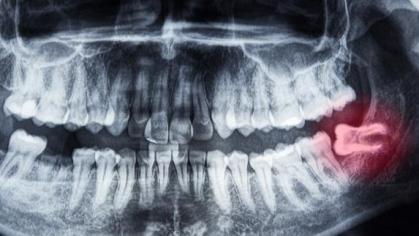Factors to Examine When Diagnosing Oral Lesions
If you’ve ever had a small sore spot on the inside of your mouth, you might have been dealing with a lesion. Oral lesions are a fairly common occurrence and often benign, though usually uncomfortable. However, it’s hard to tell the difference between a harmless lesion and one that’s a symptom of a more serious condition. This guide to oral lesion diagnosis from Rutgers Health University Dental Associates introduces a few factors to consider when determining the cause of one.
What Causes Oral Lesions?
Oral lesions are fairly common and have a wide variety of causes. Many of these are relatively simple and easily preventable, including:
- Minor injuries from cheek biting, or rubbing on sharp edges of teeth or sports mishaps
- Food sensitivities to chocolate, coffee, strawberries, eggs, nuts, cheese, or spices
- Allergic response to certain foods, oral hygiene products or dental work
- Hormonal shifts and emotional stress
Some lesions, however, might have more serious causes, such as resulting from a gum or tooth infection. Others are signs of systemic conditions or skin disease. Very rarely, oral lesions that do not heal normally are a symptom of cancer.
Factors to Consider
Most oral lesions appear very similar at first glance, making it difficult to tell what kind of lesion a person might be dealing with. By assembling some basic information, however, a patient can make it much easier for a doctor to diagnose the cause. Here are a few factors to consider:
Location, Quantity, and Distribution
The first factor to consider is location. If it’s near a loose brace wire or other rough material, the lesion might simply be the result of rubbing. Also, pay attention to how many lesions there are and whether they’re clustered together or scattered around the mouth.
Size, Shape, Color, and Consistency
Second, take note of what the lesion looks like. The size and shape of the lesion are key factors in diagnosing its cause. So is its color. Some lesions are red or pink, while others are pale white or even yellow. Finally, check its texture as it compares to the surrounding tissues. Is it swollen or cratered? Rough or smooth? Soft or hard and knotty?
History and Duration
A third important factor is the lesion’s history. Try to remember when the lesion first appeared and whether there had been any recent injuries to that area. Also, make a note of how long the lesion has been present without healing. This is because some lesion come and go while others persist without healing. If a lesion has been there a very long time with no signs of disappearing, it’s cause might be more serious.
Other Symptoms
While this factor is the last on the list, it’s not the least essential. Symptoms describe how a lesion feels like. Oral lesions may be associated with a variety of symptoms such as tenderness, pain, itchiness, burning, numbness, or bad taste. Symptoms are often the key to determining whether a lesion is a simple sore or is of a more serious nature. If you notice any symptoms that might be related, try to include them in your conversation with the doctor.
Trust Your Dentist
Though this guide may be helpful in deciding the severity of your oral lesion, you should always trust your dentist to provide a final diagnosis. Take the information you gather about your lesion and present it to a trained professional for a diagnosis you can trust. At Rutgers Health University Dental Associates, our team of experts is respected nationwide for their skills in dental diagnosis and treatment. Schedule an appointment today by contacting us in Newark or New Brunswick, New Jersey.



